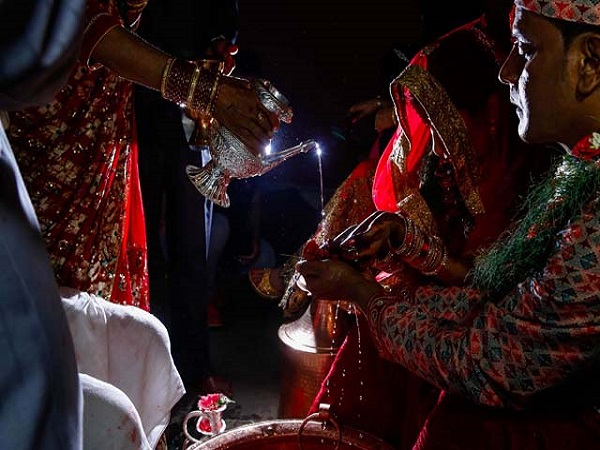As usual, when the wedding season kicked off last month, I received many invitations. However, not even one of them was a Dalit and non-Dalit tying the knot.
Despite the belief that caste stigma is limited to the fringes of Nepali society, there is still much 'selective openness' regarding marriage. Unions between castes may be accepted in some circles, but only to a certain extent. For instance, a Brahmin family may accept a Chhetri son-in-law but would resist a Newa daughter-in-law. Even educated Nepalis still practice caste-based discrimination, even through its branding and packaging may have changed from the past.
Many of us in our 20s constantly get unsolicited advice on marriage and choosing the right partner: "????? ????? ?????? ???? ? ???? ????????, ?? ??? ????? ???? ????? ?????? ??" -- We may not discriminate on the basis of caste, but make sure you chose the right one.
Alas, this 'well-intentioned' statutory directive fails to offer tips on how exactly one is to find a genuine partner. Instead, it perpetuates a mathematical theorem to maintain historical caste divisions: Avoid mingling with the Dalits at all cost.
Liberal Nepalis today will accept anyone - foreigners or Nepali - but only to an extent, and definitely not from the Dalit community. Inter-caste marriage may be more common than before, but it has not eliminated discrimination. Activist Shiva Hari Gyawali tallies 60 reported caste-based deaths during the last 10 years, even after the implementation of the Caste-Based Discrimination and Untouchability Act (2011).
Every year, there are many reported cases of caste-based violence as a result of inter-caste marriage. Nabaraj BK, Prakash Biswokarma, Ajit Mijar, Sangita Sunar - these are names that prove how deeply exclusionary marriage is even today. As whatever is personal is also political, the next step for any Dalit-ally advocating for the elimination of caste-based discrimination and violence is to promote safe space for inter-caste marriage between Dalits and non-Dalits. This may help demolish the 'walls' that divide castes, and help reverse centuries of injustice.
The end of casteism does not just ensure justice the Dalit community but also for non-Dalits. One Brahmin restaurant owner says his parents objected to his establishment offering pork memos because "it is not in our culture". This 'culture' is a toxic environment shaped by generations of patriarchal and casteist doctrines that forces hurdles upon anyone who wants to pursue their dream, be it in love or occupation. In Nepal, marriage is not just a union between two people or families: it ensures the transfer of social capital and financial resources. Removing social barriers to inter-caste marriage can be a potent tool to eliminate discrimination.
Government policies to promote inter-caste marriage is mostly lip-service. A 2011 program to provide financial incentives for inter-caste marriages was discontinued ostensibly because of 'fake marriages' where couples separated soon after getting their money. But a report published in 2018 indicates that the authorities were themselves engaged in breaking up the marriages.
The Caste Handbook published by the Asian Human Rights Commission in 2019 shows that for every case of human rights abuse faced by a Khas-Arya and Janajati couple due to inter-caste marriage, there were almost 16 cases registered by Dalit and Janajati couples, and nearly 40 more for Dalit and Khas-Arya couples. This difference in the varying degrees of acceptance of inter-ethnic and inter-caste marriages could be the driving force behind the separation of couples, which in turn may be furthering stigma against inter-caste unions.
Activist Gaura Nepali of the Centre for Dalit Women Nepal says inter-caste marriages could be a powerful tool to end caste-based discrimination. This is also because a woman marries into a man's house. The family can be an agent of change among their relatives and society at large.
The Khas-Arya has always had transactional relationship with the Dalit community because they used to rely on Dalits to make their clothes, tools, and jewellery.
While much has changed today with urbanisation, globalisation and mobility, much remains the same. That is why casteism is still rife while renting out rooms or conducting business. These are new forms of the same transactional relationship that our ancestors practiced.
It is time for non-Dalit allies to commit to actionable solidarity with the Dalit community, and move beyond just verbal commitment. One should not wait for another Nabaraj BK to lose his life to speak against casteism.
Promoting a neighbourhood's Dalit artisan, participating in rallies and advocacy programs on Dalit rights, conversations at home with parents and grandparents about caste-based injustice, can be some ways to practice this solidarity.
Source: Nepali Times0 COMMENTS



